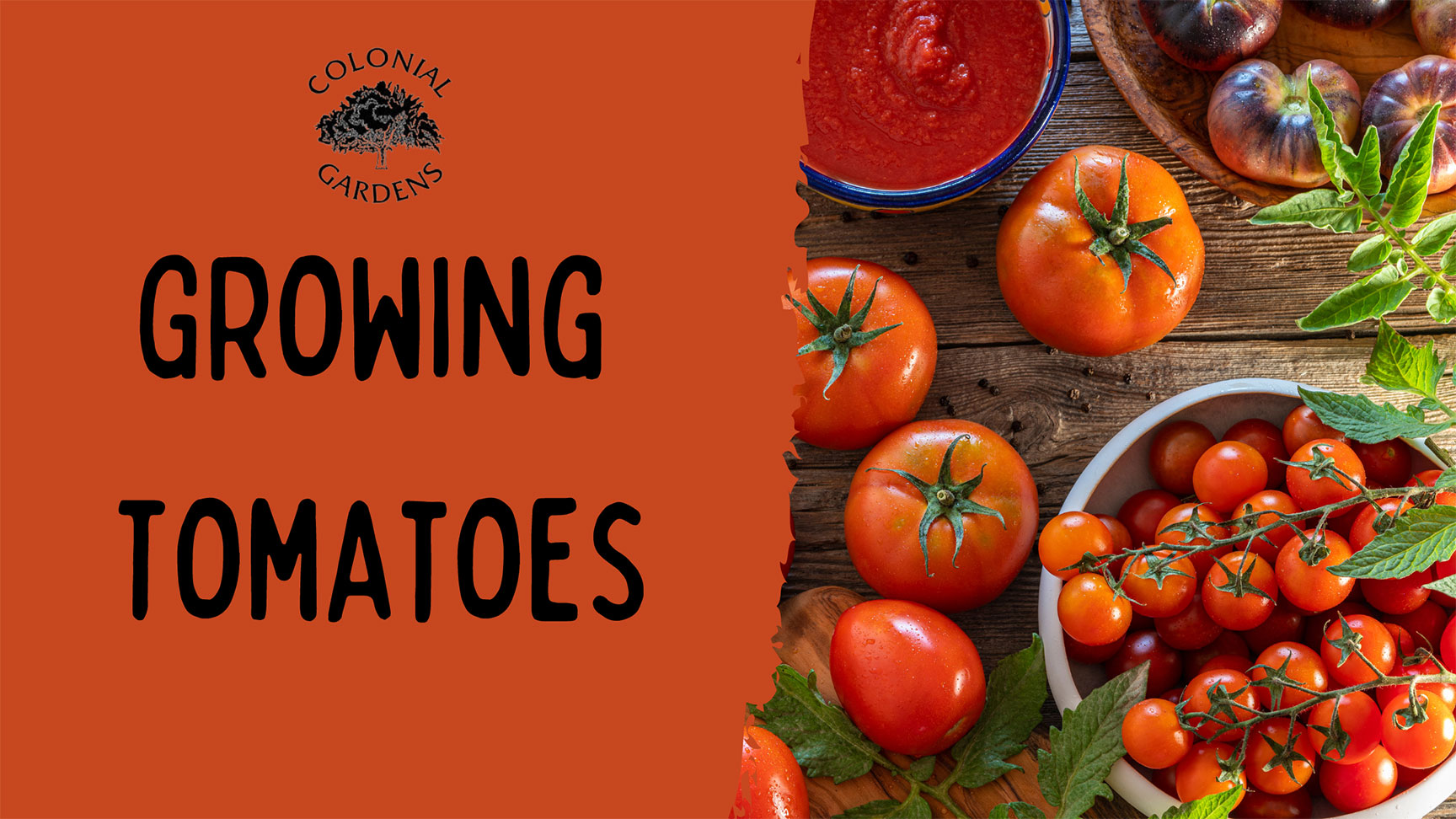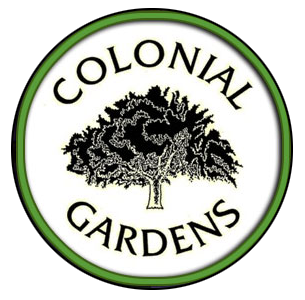
Tomatoes can be an extremely rewarding crop to grow for first time gardeners! With hundreds of varieties readily available, it can be overwhelming to get started. This guide is designed to help you pick the best tomato seedlings and grow a bountiful harvest.
Prepping Your Space
Tomatoes are a full-sun crop, which means that they require a space that has at least 6 hours of direct sunlight per day. Pick a sunny location with at least 24 x 24″ of space. Tomatoes can be grown in the ground or in a large container. These plants need lots of nutrients to produce their fruit. Add compost or a soil amendment to your existing soil if you are planting in the ground to add nutrients and lighten the soil. If you are planting tomatoes in a pot, you need a pot that is at least 16″ in diameter. Some smaller varieties may do okay in smaller pots, but you risk crowded roots and drying out between waterings. Add high-quality potting soil to the container for proper nutrients and drainage.
Tomatoes aren’t too picky about their neighbors and do great growing near peppers, eggplants, brassicas like broccoli, onions, garlic, beans, and cucumbers. Basils, calendulas, and marigolds can repel pests and are great companion plants for tomatoes. Avoid growing tomatoes near corn, potatoes, and kohlrabi. If you’ve grown tomatoes in the same plot for the last two years, consider moving them to another area to prevent recurring disease and nutrient deficiency.

Selecting the Right Tomato
Tomatoes are versatile fruits and can be used for a variety of culinary purposes. Here are some types of tomatoes:
- Beefsteak/Slicers: These medium to large tomatoes are perfect for slicing for burgers and sandwiches.
- Cherry/Grape: These bite-sized tomatoes are perfect for snacking, roasting, or adding to salads. They tend to be sweeter.
- Roma/Plum: These medium-sized tomatoes are great for sauces, salsas, and pastes.
- Heirloom: Heirloom plants are open-pollinated varieties that are decades old. These varieties can be more fragile than non-heirloom varieties, but offer unique flavors, shapes, and colors.
Within these general categories, individual varieties may offer specific advantages for growing conditions, size, color, or flavor. For example, you may look for descriptions like “container-friendly” or “heat-tolerant.” Another descriptor to look for is “determinate” or “indeterminate.” Determinate tomatoes produce fruit all at once and stay smaller, while indeterminate tomatoes produce fruit throughout the season and grow larger.

Check out our full tomato list here.
Planting
Tomatoes should be planted in the mid-late spring for the best results. Frost can knock the buds off the plants or even outright kill the plant, so it is best to plant after the risk of frost has passed. In our area, we do not recommend planting tomatoes prior to Mother’s Day.
Dig a hole at least twice as wide as the tomato plant. Mix in compost or an organic fertilizer like TomatoTone into the hole. When planting your tomato, you should plant the seedling at least as deep as it is in the pot, however, you can plant it an inch or two deeper. The tomato will send out more roots from the part of the plant in contact with the soil. Remove any leaves that touch the soil to prevent disease transfer. Refill the hole with the amended soil, gently pressing the soil down so that it has contact with the roots. Water the seedling after planting.
To help reduce disease, reduce weeds, and improve tomato health, consider mulching with an un-dyed mulch around your veggie plants.

Watering
Incorrect watering is the biggest issue that new gardeners can face with tomatoes. Tomatoes require consistent watering for proper fruit development. Moisten the top six to eight inches of soil. Water at the base of your tomato, not overhead, to help prevent disease and fungus. In the heat of summer, water in the morning. The frequency of watering depends on the temperature, your individual plant, and the growing conditions. You may need to water tomatoes up to twice a day.
Other Care Elements
Fertilizing: Tomatoes feed heavily on the nutrients in the soil. Starting your plant in high-quality soil will reduce your need for additional fertilizer, but you may need to supplement with a water-soluble or slow-release fertilizer, such as TomatoTone. All-purpose fertilizers can work, but tomato-specific fertilizers tend to contain more calcium, an important ingredient for preventing blossom end rot.
Cage or Trellis: Tomatoes need support to reach their full potential! Add a cage or trellis to help the tomato grow upright. This will both help the plant and give you more tomato for your available space. Determinate tomatoes top out in height around four feet so they will do just fine with a regular tomato cage. Indeterminate tomatoes grow more as vines and will do better with a larger trellis or other support structure.

Pruning: Tomatoes will grow rapidly in the right conditions. If you want to keep them a certain size or have the plant dedicate nutrients to fruit instead of growth, you can prune back new growth. Be careful: Over-pruning can expose your fruits to too much sun, which can burn them.
Common Problems and Solutions
Blossom-End Rot: Black or brown leathery patches on the bottom of your tomatoes are typically due to a lack of calcium. This may be due to a lack of calcium in the soil, in which case, you should fertilize with a product like TomatoTone. It can also be caused by droughts or inconsistent watering that affects the plant’s ability to uptake nutrients.
Cracking: Cracks in the fruit can occur when the plant is watered inconsistently due to human error or excessive rainfall.
Yellow Leaves: Yellow leaves at the base of the growing plant can be natural as the plant shades itself. If you see yellow leaves low on the plant, you can trim them out for better air circulation. If you see widespread yellow leaves, add fertilizer to the soil for an infusion of nitrogen and magnesium.
Early Blight: Brown spots on the leaves that turn into rings can be a sign of blight. Blight starts in the soil. Rotating crops in the same family to other parts of your garden can help reduce blight.
Blossom Drop: If your plant gets blossoms, but doesn’t produce fruit, it is likely either too warm or too cold. Keep the plant healthy until the weather changes to better growing conditions.
Want to know when our tomatoes arrive? Follow our weekly newsletter for the latest updates on new arrivals!
